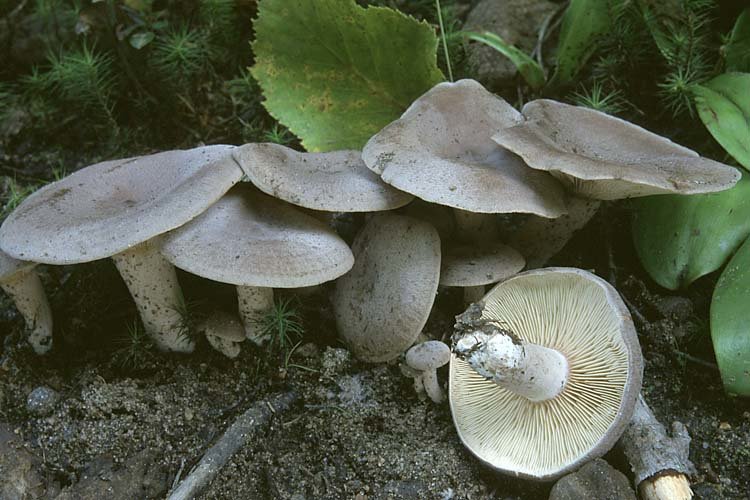Papillary breast (Lactarius mammosus)
- Diviziona: Basidiomycota (Basidiomycetes)
- Fizarana: Agaricomycotina (Agaricomycetes)
- Kilasy: Agaricomycetes (Agaricomycetes)
- Sobika: Incertae sedis (tsy azo antoka ny toerana)
- Ordinatera: Russulales (Russulovye)
- Fianakaviana: Russulaceae (Russula)
- Karazana: Lactarius (Milk)
- Type: Lactarius mammosus (Papillary breast)
- Milky papillary;
- Large breast;
- Agaricus mammosus;
- Milky large;
- The milky mammary.

The papillary breast (Lactarius mammosus) belongs to the genus Milky, and in the scientific literature is called the papillary lactic. Belongs to the Russula family.
The papillary breast, which is also known as the large breast, has a fruiting body with a cap and a leg. The cap diameter is 3-9 cm, it is characterized by a concave-spread or flat-spread shape, small thickness, combined with fleshiness. There is often a tubercle in the center of the cap. In young fruiting bodies, the edges of the cap are bent, then become prostrate. The color of the mushroom cap can be bluish-gray, brown-gray, dark gray-brown, often has a purple or pink tint. In mature mushrooms, the cap fades to yellow, becomes dry, fibrous, covered with scales. The fibers on its thin surface become visible to the naked eye.
The mushroom leg is characterized by a length of 3 to 7 cm, has a cylindrical shape and a thickness of 0.8-2 cm. In mature fruiting bodies it becomes hollow from the inside, it is smooth to the touch, whitish in color, but in old mushrooms the shade becomes the same as in hats.
The seed part is represented by whitish spores of a rounded shape, with dimensions of 6.5-7.5 * 5-6 microns. Mushroom pulp at the cap is white, but when peeled, it becomes dark. On the leg, the pulp is dense, with a sweetish aftertaste, brittle, and has no aroma in fresh fruiting bodies. When drying mushrooms of this species, the pulp acquires a pleasant smell of coconut flakes.
The hymenophore of the lactiferous papillary is represented by a lamellar type. The plates are narrow in structure, often arranged, have a whitish-yellow color, but in mature mushrooms they become red. Slightly run down the leg, but do not grow to its surface.
The milky juice is characterized by a white color, flows not too abundantly, does not change its color under the influence of air. Initially, the milky juice has a sweetish aftertaste, then it becomes spicy or even bitter. In overripe mushrooms, it is practically absent.
The most active fruiting of the lactiferous papillary falls on the period from August to September. The fungus of this species prefers to grow in coniferous and mixed forests, as well as in deciduous forests. It likes sandy soils, grows only in groups and does not occur alone. It can be found in the northern temperate regions of the country.
The papillary mushroom belongs to the category of conditionally edible mushrooms, it is used mainly in a salty form. However, many foreign sources indicate that the papillary milky is an inedible fungus.
The main similar species with papillary milkweed (Lactarius mammosus) is fragrant milkweed (Lactarius glyciosmus). True, his shade is lighter, and the color is characterized by a grayish-ocher color with a pinkish tint. Is the former mycorrhiza with birch.









